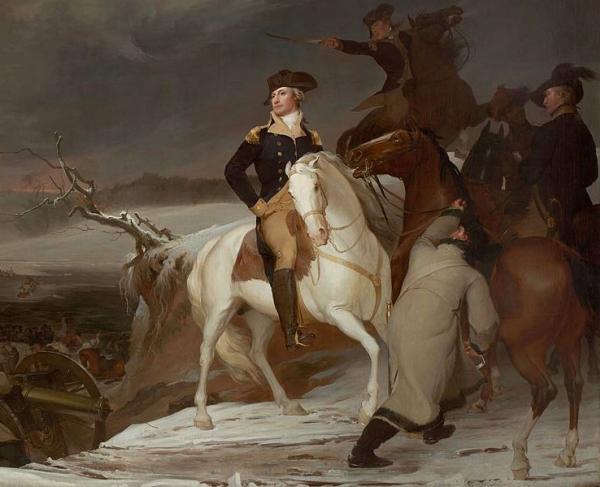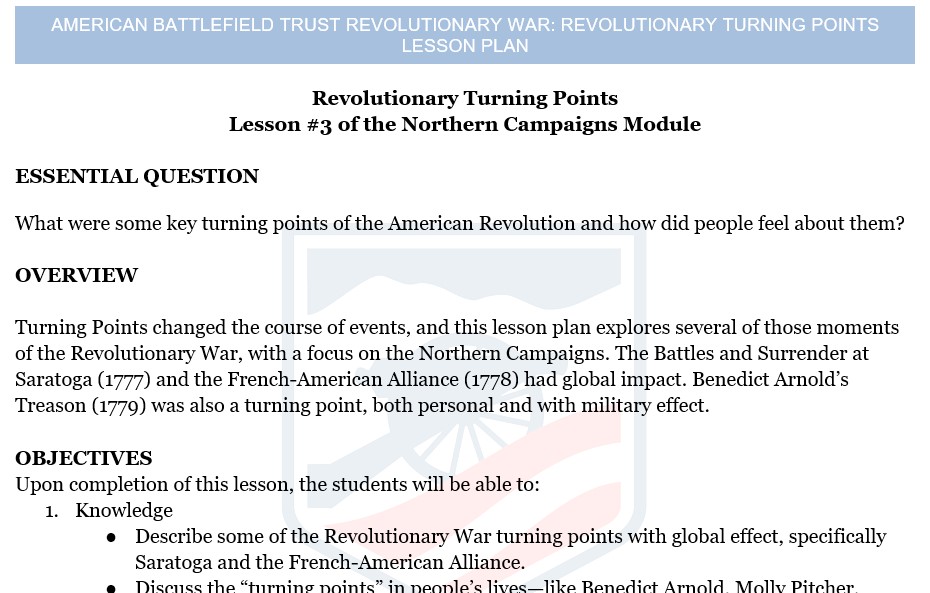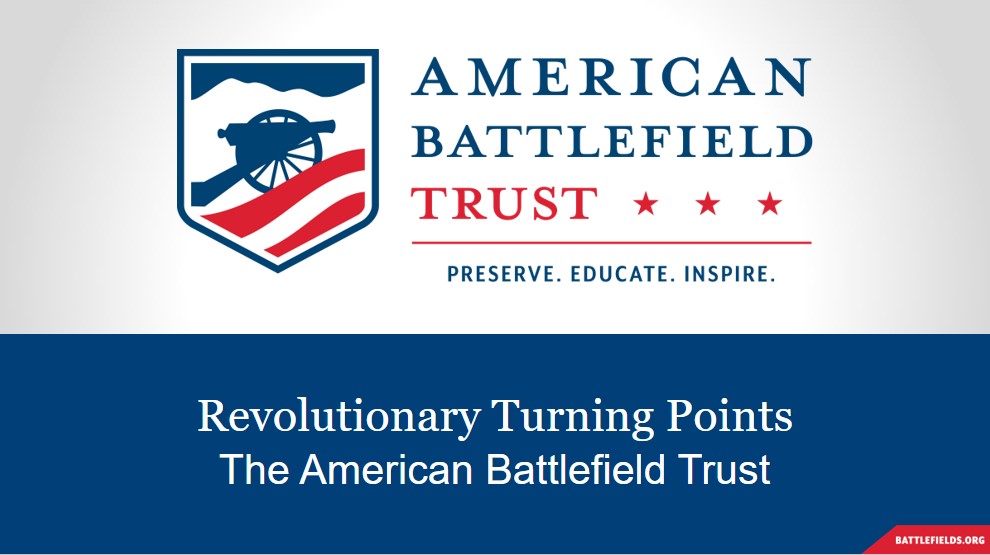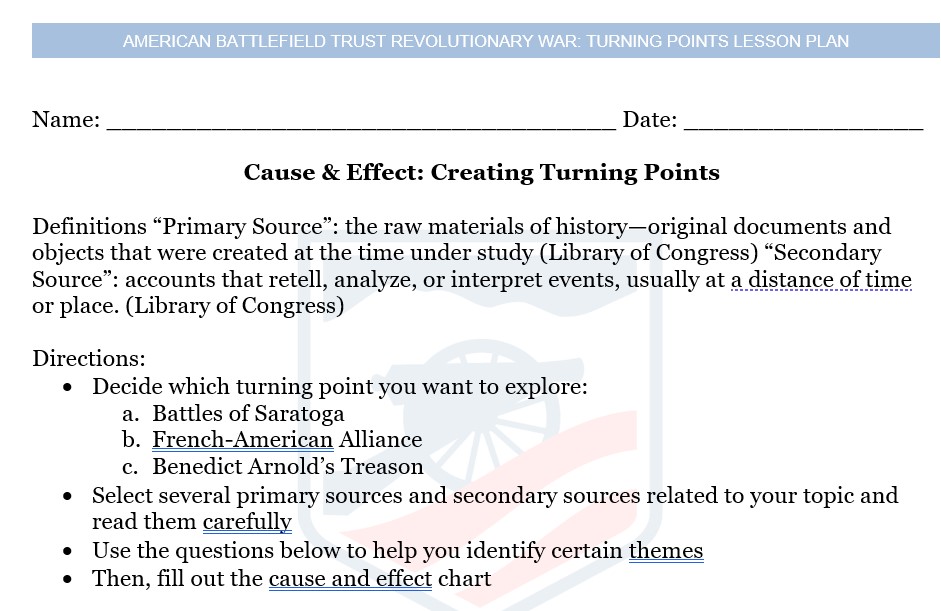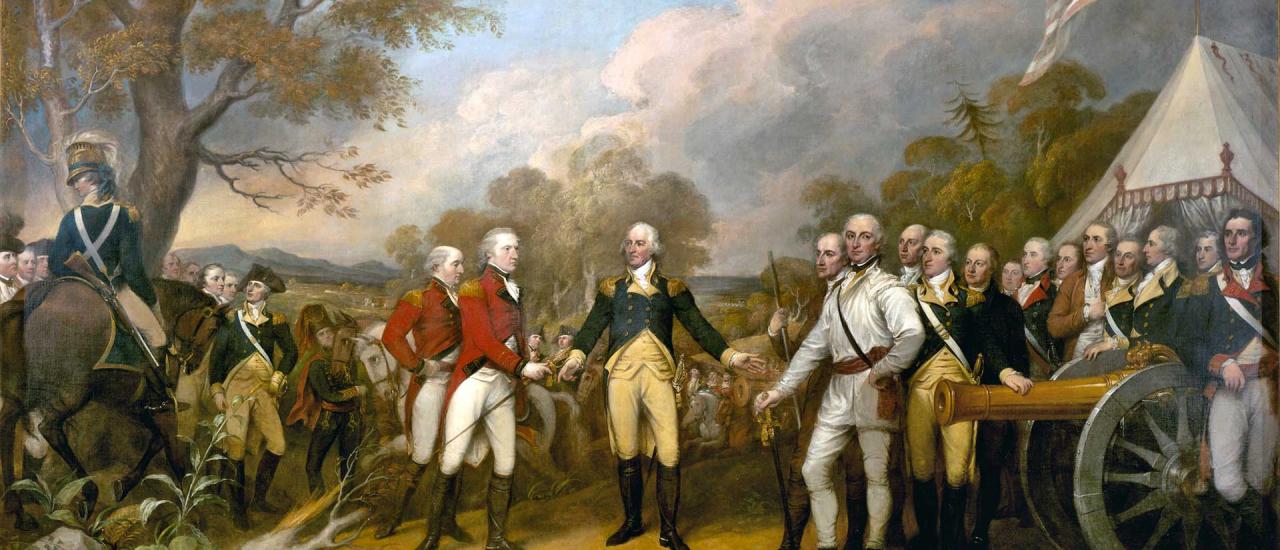
John Trumball’s famous painting “The Surrender of General Burgoyne” at Saratoga resides at the U.S. Capitol.
Revolutionary Turning Points Lesson Plan
A lesson plan for use in middle and high school classrooms.
Turning Points changed the course of events, and this lesson plan explores several of those moments of the Revolutionary War, with a focus on the Northern Campaigns. The Battles and Surrender at Saratoga (1777) and the French-American Alliance (1778) had global impact. Benedict Arnold’s Treason (1779) was also a turning point, both personal and with military effect.
This Lesson Plan can be used as a prepared resource by following this curriculum plan which aligns to NCSS and Common Core Standards.
This Lesson Plan's assets can also be used on their own as supplemental resources. The display format is prepared for easy access, exploring, and learning.
The Northern Campaigns Module
Upon completion of this lesson, the students will be able to:
1. Knowledge
- Describe some of the Revolutionary War turning points with global effect, specifically Saratoga and the French-American Alliance.
- Discuss the “turning points” in people’s lives—like Benedict Arnold, Molly Pitcher, Marquis de Lafayette, or Tadeusz Kosciuszko people’s reactions George Washington’s leadership during the Revolutionary War.
2. Comprehension/Application/Analysis
- Read and take notes from primary source and secondary sources, then fill out a cause and effect chart.
3. Evaluation
- Evaluate and discuss some of the turning point moments of the Revolutionary War and their long-reaching effects.
Check out the Lesson Plan Teaching Guide for more instructions on using the prepared Lesson Plan.
Lesson Plan Primary and Secondary Source Activity:
- Use the Lesson’s PowerPoint to explore the context and history; the PowerPoint introduces Essential Questions and lays foundational knowledge about the conflict.
- Watch the Northern Campaigns Animated Map Video. The 1777 Campaign begins around the 12:30 minute mark; we recommend starting there and watching to the end (about 6 minutes total) if you are short on time.
- Have the students select a turning point to examine. The resources are directed toward 1) Battles of Saratoga, 2) French-American Alliance, or 3) Benedict Arnold’s Treason.
- Distribute the worksheets and have the students read several of the provided primary sources and secondary sources for this lesson.
- Primary Sources, Secondary Sources, and Biographies related to the suggested study choices are available on the Lesson Plan Page.
- Students will write take notes and fill out the cause and effect chart on their worksheet.
OPTIONAL HOMEWORK/ASSESSMENT/ADDITIONAL ACTIVITIES:
Option 1: Interactive Timeline
Have the students read this article/timeline about the creation and effects of the French-American Alliance and identify key points. Each student or groups of students will research a separate key point and write down a three-sentence summary. Write the dates of the key points on sheets of paper and have the students sit or stand in timeline order and share their summary findings in order. This concept could be expanded to include costumes, art, or other learning interactives.
Option 2: Revolutionary Spies
Spies helped to prevent Benedict Arnold’s treason and provided other valuable information throughout the war. Have the students examine these sources and then create their own “spy persona.” A verbal description, short essay, or other style of reporting can be used to share their character with the classroom. This concept could be expanded to include costumes, art, or other learning interactives.
Common Core State Standards- ELA & History/Social Studies
Grades 6-8
- Key Ideas and Details:
- CCSS.ELA-LITERACY.RH.6-8.3
- Identify key steps in a text's description of a process related to history/social studies (e.g., how a bill becomes law, how interest rates are raised or lowered).
- CCSS.ELA-LITERACY.RH.6-8.3
- Craft and Structure:
- CCSS.ELA-LITERACY.RH.6-8.5
- Describe how a text presents information (e.g., sequentially, comparatively, causally).
- CCSS.ELA-LITERACY.RH.6-8.5
- Integration of Knowledge and Ideas:
- CCSS.ELA-LITERACY.RH.6-8.9
- Analyze the relationship between a primary and secondary source on the same topic.
- CCSS.ELA-LITERACY.RH.6-8.9
Grades 9-10
- Key Ideas and Details:
- CCSS.ELA-LITERACY.RH.9-10.2
- Determine the central ideas or information of a primary or secondary source; provide an accurate summary of how key events or ideas develop over the course of the text.
- CCSS.ELA-LITERACY.RH.9-10.3
- Analyze in detail a series of events described in a text; determine whether earlier events caused later ones or simply preceded them.
- CCSS.ELA-LITERACY.RH.9-10.2
- Craft and Structure:
- CCSS.ELA-LITERACY.RH.9-10.5
- Analyze how a text uses structure to emphasize key points or advance an explanation or analysis.
- CCSS.ELA-LITERACY.RH.9-10.5
- Integration of Knowledge and Ideas:
- CCSS.ELA-LITERACY.RH.9-10.7
- Integrate quantitative or technical analysis (e.g., charts, research data) with qualitative analysis in print or digital text.
- CCSS.ELA-LITERACY.RH.9-10.7
Grades 11-12
- Key Ideas and Details:
- CCSS.ELA-LITERACY.RH.11-12.2
- Determine the central ideas or information of a primary or secondary source; provide an accurate summary that makes clear the relationships among the key details and ideas.
- CCSS.ELA-LITERACY.RH.11-12.2
- Integration of Knowledge and Ideas:
- CCSS.ELA-LITERACY.RH.11-12.7
- Integrate and evaluate multiple sources of information presented in diverse formats and media (e.g., visually, quantitatively, as well as in words) in order to address a question or solve a problem.
- CCSS.ELA-LITERACY.RH.11-12.9
- Integrate information from diverse sources, both primary and secondary, into a coherent understanding of an idea or event, noting discrepancies among sources
- CCSS.ELA-LITERACY.RH.11-12.7
Social Studies - National Council for the Social Studies
- Theme 1: Culture
- Theme 2: Time, Continuity, and Change
- Theme 3: People, Places, and Environments
- Theme 5: Individuals, Groups, and Institutions
- Theme 9: Global Connections
This Lesson plan
contains the following:
3 Activities | 23 Resources
Audience: Middle school | High school
This Lesson plan is a part of:
Revolutionary War Curriculum | The Northern Campaigns Module
